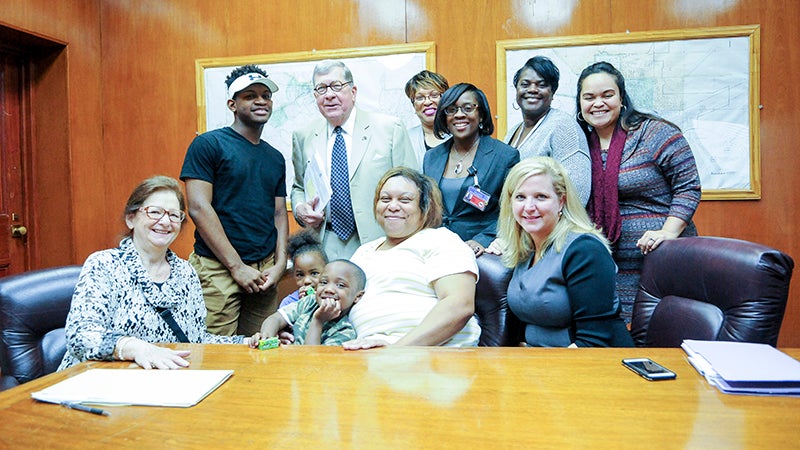Terminal project breaks ground
Published 9:03 pm Thursday, December 16, 2010

From left, Frank Farmer, Larry Nickles, Roy Moore, Johnny Jones, Wayne Vardaman, Dallas County Probate judge Kim Ballard, Menzo Drikell, Dr. james Mitchell, Dr. Kenny Hatcher and Selma Mayor George Evans officially break ground on the new airport terminal building at Craig Field Airport. -- Tim Reeves photo
A partnership between state and local authorities is quickly taking shape at Craig Field Airport as the official groundbreaking of the airport’s new, 3,000-square-foot terminal took place Thursday.
“As I have said before, I like to call this new airport terminal the new front door to Selma and Dallas County,” Craig Field Airport and Industrial Authority executive director Menzo Driskell said. “This is a very exciting day here at Craig Field.”
The new, $400,000 state-of-the-art facility, which should be completed by April, will provide visitors a pilot’s lounge, showers, conference room and a room and equipment for pilots to plan out and file flight plans.
The funding for the program comes in part from an Alabama Department of Transportation’ aeronautics bureau initiative that provides a dollar-for-dollar match to general aviation facilities, such as Craig, to improve their terminal facilities.
The terminal at Craig, once completed, will be the third terminal completed and the first of the medium-sized terminals designed by the state.
With half of the funding coming from the state, the rest will be funded by the Craig Field Airport and Industrial Authority.
“We have talked about this building for a long time,” authority chairman and Wallace Community College president James Mitchell said. “We’ve talked about the shingles, the colors, the bricks and are very glad that we are at this point today.”
For Dallas County Probate Judge Kim Ballard, the construction of the new facility will be a nice visual change to the airport and it will also give him and economic development officials another asset in recruiting new industry.
“The first impressions of our old terminal were not great, but they served a purpose,” Ballard said. “We might have lost some businesses because of that impression, but that will obviously change with this terminal.”
The construction program, which designed three different terminals for communities, has been under the director of John Eagerton, the aeronautics bureau director.
“We had a firm draw up three plans — one small, one medium and one large — that we could present to airports around the state that fit within the state’s aeronautical plan,” Eagerton said in an October interview with the Times-Journal. “By doing this, we removed a lot of the front end costs associated with construction and gave the airports a blueprint they could start from.”
Eagerton said for airports to participate in the terminal building program, they had to choose from one of the three designs.
“There are some small changes that are made in each case, but if there are any large changes planned, where the architect has to come back in, then those are at the expense of the airport,” Eagerton said.
A large terminal has already been constructed at the Prattville airport while the field in Coosada has constructed the smaller version. The terminal in Selma will be the first medium-sized terminal constructed.
Goodwin, Mills and Cawood, in addition to being the architectural designers of the Selma terminal, will also act as project managers for construction.





